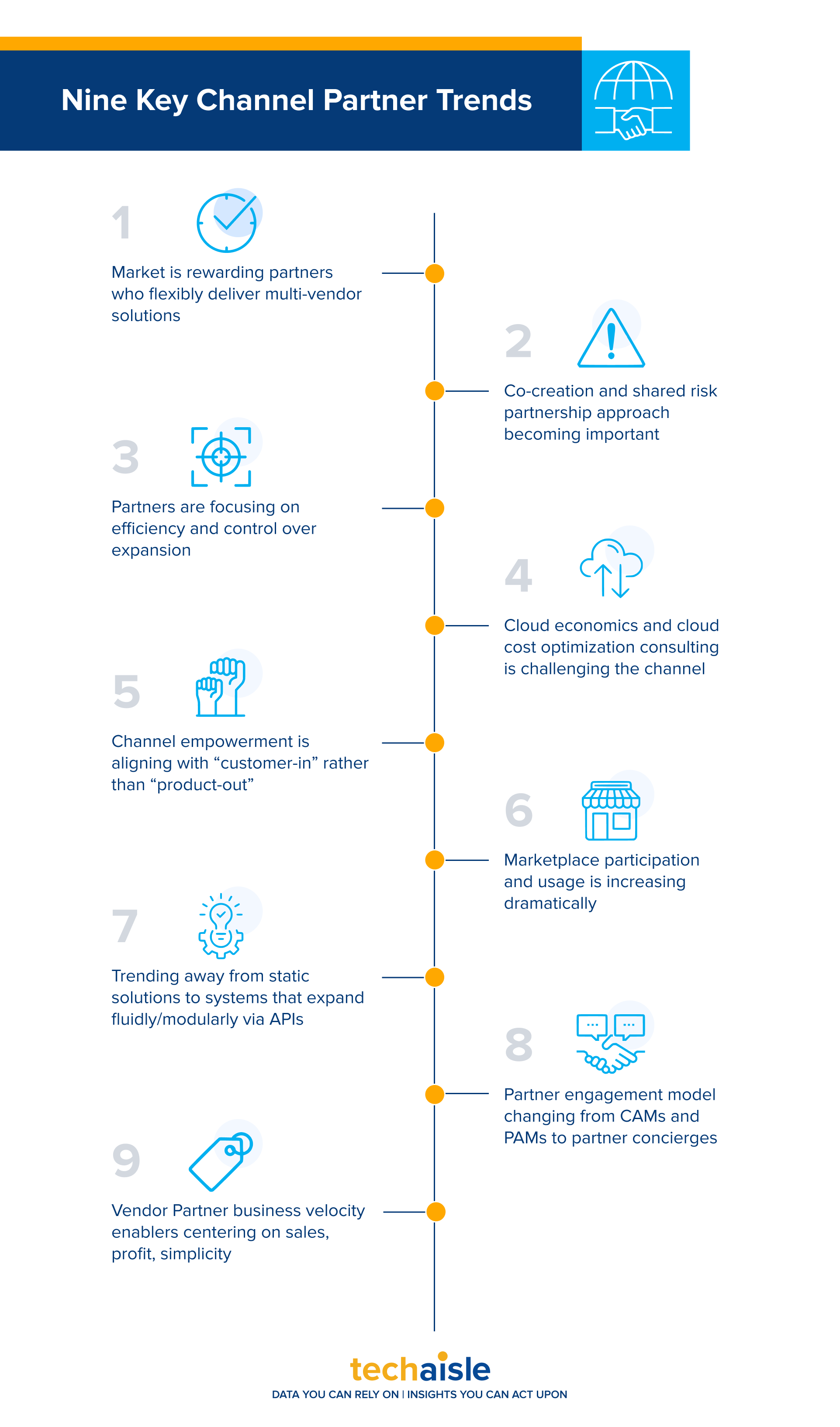Techaisle Blog
Nine key channel partner and ecosystem trends
IT adoption has become more diffused. The explosive growth in non-IT management control over IT decisions, which changes the buying point and jeopardizes the value of the channel’s IT relationships, is the change that signals the dawning of the inflection point. The IT channel is changing permanently and in ways entirely different from what we’ve seen in the past. In the same way that “cloud” refers to an extensive range of very different IT models and deployments, “the channel” is becoming a generic phrase that describes a set of business approaches that is increasingly specialized and fragmented. Techaisle’s in-depth channel partner and ecosystem research show nine key trends.

Channel partners are being challenged in new ways.
Easy-to-deploy as-a-Service offerings appeal to buyers with specialized needs inside large enterprises, meaning channel members may be present in some of the large enterprise accounts coveted by direct sales teams – increasing vendor/channel conflict.
Cloud’s global reach allows specialist firms to serve customers wherever they are located (a trend that has likely picked up steam during the pandemic, where all suppliers are remote); this has opened the path to increased competition between geographically-dispersed channel organizations.
Cloud’s recurring revenue model has changed the ‘rules of the game’ for channel business leaders: management metrics are changed, sales compensation and management is changed, finance and cash management are changed, and the role of marketing is greatly expanded (from ‘fill the top of the funnel’ to ‘and then lead prospects through the funnel, provide engagement options like freemium try-before-you-buy versions of services, and land initial orders’).
Fluidly configurable, API-driven solutions have changed how technical staff learns and works. These solutions challenge the traditional approach used by the channel: instead of designing a system that addresses a specific need, marketing it to organizations that are looking to address that need, and then expanding off the core solution through a series of well-defined extensions, channel organizations are now forced to keep pace with rapidly-changing system definitions and an expectation that solutions extend flexibly to meet new requirements through the integration of task-specific applications or capabilities.
There are clear opportunities for vendors to expand their influence with partners by enhancing digital marketing activities. The data also suggests that a lack of content may constrain channel members – they are investing in driving traffic but have reduced capacity to use thought leadership to engage visitors. Vendors can work with partners to increase digital marketing quality, efficacy, and content.
When you subscribe to the blog, we will send you an e-mail when there are new updates on the site so you wouldn't miss them.















